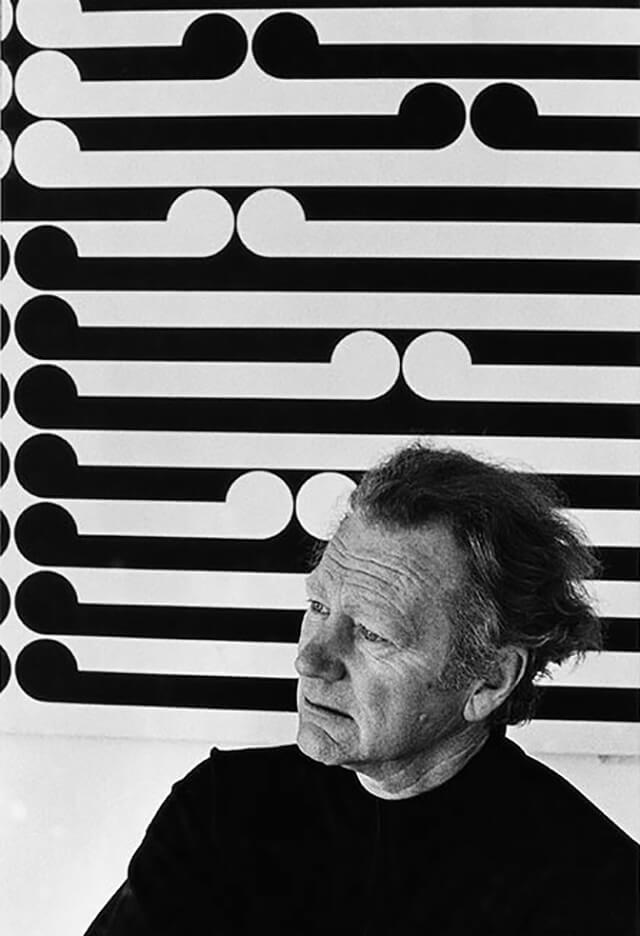
E. Mervyn Taylor, engraver, muralist, sculptor
E. Mervyn Taylor was a courageous man who dared to become a full-time professional artist, drew inspiration from the New Zealand landscape, and forged a unique path in his portrayal of Māori folklore and mythology.
From an early age he was interested in art. He took an apprenticeship as an engraver for a manufacturing jeweller, before working in the advertising studio of W. D. & H. O. Wills, both steps in his journey to become a fulltime artist. Realising that printmaking might be a good step in his artistic development, he enrolled in Fred Ellis' night classes at Wellington Technical College’s School of Art.
Ellis encouraged Mervyn to become a member of the New Zealand Academy of Fine Arts, and three of his wood engravings were accepted for display at the Academy’s annual exhibition in late 1937. In the same year he married Edelweiss 'Teddy' Cooke, who introduced him to Māori mythology.
Also in 1937, Mervyn joined the advertising company Carlton-Carruthers, where he met a group of like-minded creative people who encouraged him to enrol once again at the Wellington Technical College and attend life drawing classes to improve his figure drawing.
In 1939 Mervyn left advertising to pursue a career as a freelance artist, setting up a small studio in Willis Street, however in 1942 his artistic career was interrupted when he enlisted in the army.
Returning from war, Mervyn served as the Art Editor and Illustrator for the School Publications Branch of the Department of Education, home of the New Zealand School Journal. Mervyn's work was widely distributed throughout New Zealand, and many New Zealanders fondly remember his numerous wood engravings, depicting New Zealand flora and fauna, and scenes of Māori life and mythology.
In 1952, Mervyn was awarded a scholarship from the Association of New Zealand Art Societies. Most New Zealand artists choose to go abroad. Mervyn chose to remain in New Zealand where he spent time in Te Kaha, a small Bay of Plenty town on the edge of the East Cape, where he studied Māori life, working on a project to illustrate each of the stories from Sir George Grey's book Polynesian Mythology.
Meryn’s recognition as a master print maker and engraver started to extend beyond New Zealand. He exhibited, toured, and was made a fellow of numerous prestigious organisations throughout the world. He exhibited in Moscow and was the first New Zealand artist to mount a solo exhibition in New York.
In New Zealand he continued to exhibit and take commissions, but he was also concerned with the development of the arts in New Zealand, using his influence and initiative to bring about the first combined exhibition of sculpture, pottery and the graphic arts, held at the Academy of Fine Arts in 1962. He was also a member of the National Art Gallery management committee, and a founder of the Architectural Centre in Wellington. He consistently advocated that each new building should display a work of art commissioned specifically for the site.
He produced 13 murals using paint, sand-blasted glass, wood-carving, and ceramic tiles. Spectacular murals were produced for post offices, war memorials, and other public buildings throughout the North Island. The College of Creative Arts is working on a project to uncover, restore and protect these works, some of which have been lost or covered over.
Mervyn died suddenly in Wellington Hospital on 7 June 1964, aged 58. He had dedicated his life to being both an artist and a communicator; bringing art close to people. He was of a generation that wanted to cast off colonialism and discover a way to see the world and interpret its character from a South Pacific perspective.
More Art stories

Art
Gordon Walters
Gordon’s iconic, and at times controversial, contribution to New Zealand culture is largely due to his synthesis of Māori and European symbols through geometric abstraction.

Art
Guy Ngan
Guy Ngan is described as one of New Zealand’s most prolific artists, with many large-scale public artworks located throughout the country.

Art
Judy Darragh
Judy Darragh’s multi-disciplined and multi-media works have transformed found, recycled, industrial, and domestic materials into new contexts and new meanings. In the process she has transported the imaginations of many New Zealanders and provided them with a new way of seeing.